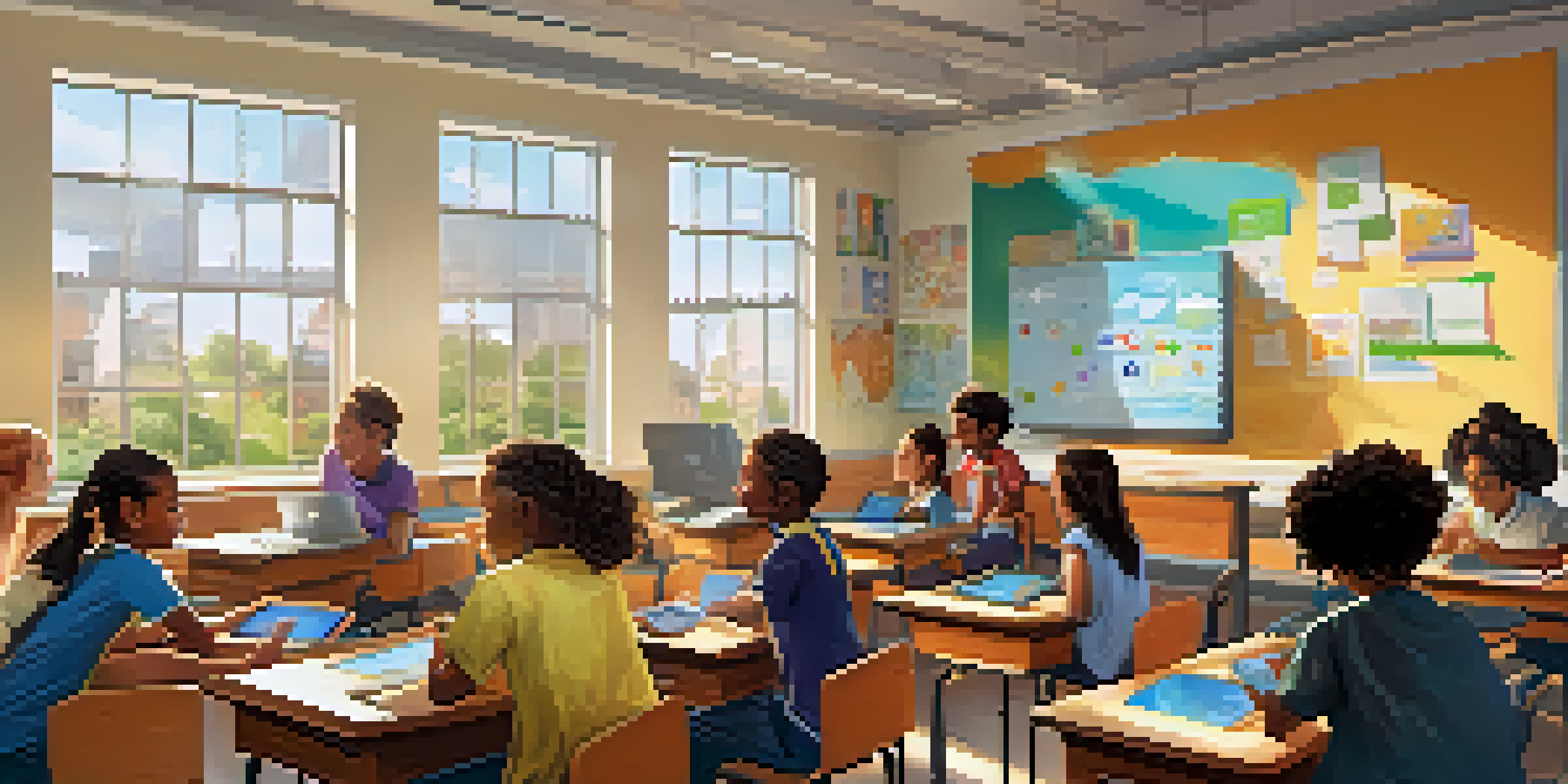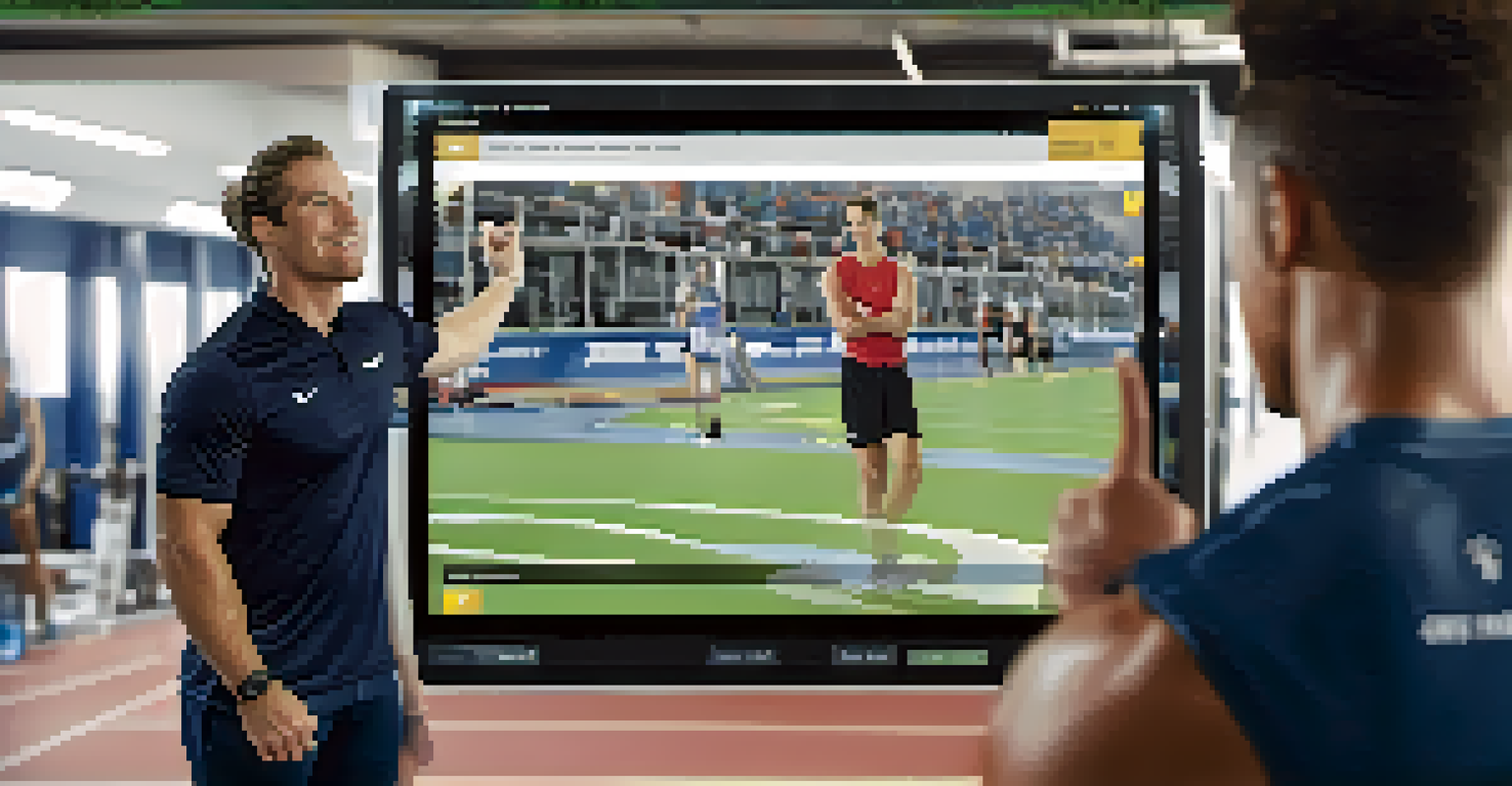The Benefits of Real-Time Learning for Engagement

Understanding Real-Time Learning and Its Importance
Real-time learning refers to the ability to acquire knowledge instantly as situations arise. Imagine being in a cooking class where you can ask questions and get instant feedback while preparing a dish. This immediacy not only enhances understanding but also fosters a more engaging learning environment.
The only thing worse than training your employees and having them leave is not training them and having them stay.
In today's fast-paced world, traditional methods of learning can feel outdated. With real-time learning, individuals can adapt quickly to new information and challenges, making it especially relevant in workplaces that value agility and innovation. It’s like having a personal coach by your side, guiding you through each step of your learning journey.
The importance of real-time learning lies in its ability to make education more relevant and applicable. When learners see the immediate impact of their actions, they are more likely to stay engaged and motivated. This approach not only caters to diverse learning styles but also ensures that knowledge is retained effectively.
Enhancing Engagement Through Immediate Feedback
One of the standout features of real-time learning is the immediate feedback it offers. Think about how athletes train; they often receive instant critiques to improve their performance. This concept applies to learning too, as it allows learners to correct mistakes before they become ingrained habits.

Immediate feedback encourages a culture of continuous improvement. When learners receive prompt responses, they feel more supported and less isolated in their learning process. It’s akin to having a GPS guiding you through unfamiliar terrain, ensuring you’re on the right path at all times.
Immediate Feedback Enhances Learning
Real-time learning provides instant feedback, allowing learners to correct mistakes promptly and build confidence in their abilities.
Moreover, this instant interaction not only boosts confidence but also fosters a sense of community among learners. They can share experiences and learn from each other in real-time, which enhances collaboration and deepens engagement in the learning environment.
Promoting Active Participation with Real-Time Tools
Real-time learning tools, like live polls and interactive platforms, significantly boost participation. Picture a classroom setting where students can respond to questions anonymously using their devices; this encourages even the shyest individuals to engage. These tools create an inclusive atmosphere that promotes deeper discussions and insights.
Learning never exhausts the mind.
Such interactive elements also make learning more dynamic compared to passive lectures. When learners actively participate, they are more likely to retain information and feel invested in their education. It’s much like a team sport, where every player’s involvement is crucial for success.
Additionally, these tools can adapt to the audience's reactions, allowing facilitators to pivot their approach based on real-time responses. This adaptability is key to maintaining engagement and catering to the group’s unique needs, making the learning experience more personalized and effective.
Fostering Collaborative Learning Environments
Real-time learning encourages collaboration, transforming individual learning into a shared experience. For instance, in group projects, team members can brainstorm ideas and provide instant feedback to each other. This collective approach fosters a sense of belonging and teamwork, making learning more enjoyable.
Collaboration in real-time also allows for diverse perspectives to be heard and valued. When learners work together, they can tackle complex problems more effectively, leveraging each other's strengths. It’s like a potluck dinner where everyone brings their best dish to the table, creating a feast of ideas and insights.
Active Participation Boosts Retention
Interactive tools in real-time learning promote active engagement, leading to better information retention and a more dynamic learning experience.
Moreover, this collaborative spirit can extend beyond the classroom or workplace. Learners can connect with peers across the globe, sharing knowledge and experiences in real-time. This global network enriches the learning experience and broadens horizons, making education a truly universal endeavor.
Increasing Motivation Through Gamification
Gamification is a powerful strategy used in real-time learning to boost motivation. By incorporating game-like elements, such as points, badges, and leaderboards, learners are more likely to engage and strive for achievement. Think of it as turning the learning process into an exciting game where progress is visually represented.
This approach taps into the natural human desire for competition and rewards, making the learning experience more enjoyable. When learners have clear goals and can track their progress in real-time, they feel a sense of accomplishment that fuels their motivation. It’s similar to training for a marathon; each milestone along the way keeps runners inspired to push further.
Additionally, gamification fosters a playful atmosphere that reduces anxiety around learning. When learners see education as a game rather than a chore, they are more likely to take risks and explore new ideas, enhancing their overall engagement and retention.
Building a Culture of Lifelong Learning
Real-time learning promotes a culture of lifelong learning, essential in today’s rapidly evolving landscape. As individuals continuously acquire new skills and knowledge, they become more adaptable and resilient. This mindset is crucial for both personal and professional growth in an ever-changing world.
When learning is integrated into daily activities, it becomes a natural part of life rather than a separate task. Imagine a workplace where employees regularly share insights and learn from each other—this culture fosters innovation and keeps everyone on their toes. It’s like planting seeds; with consistent nurturing, they grow into a vibrant garden of knowledge.
Collaboration Enriches Learning Journeys
Real-time learning fosters collaboration, enabling learners to share diverse perspectives and tackle challenges together, enhancing the overall educational experience.
Moreover, fostering a culture of lifelong learning encourages curiosity and exploration. Individuals are more likely to seek out new experiences and knowledge, leading to greater fulfillment and success. This shift in perspective can transform how we view education, making it an exciting journey rather than a destination.
Leveraging Data for Personalization and Improvement
One of the remarkable aspects of real-time learning is the ability to leverage data for personalized experiences. With real-time analytics, educators and facilitators can track learner progress and identify areas for improvement instantly. It’s like having a fitness tracker that helps you understand your strengths and weaknesses.
This data-driven approach allows for tailored learning experiences that cater to individual needs. By understanding how each learner engages with content, facilitators can adjust their methods accordingly, making education more effective and relevant. It’s similar to customizing a playlist for a workout—it keeps you motivated and engaged.

Additionally, leveraging data not only benefits individual learners but also enhances the overall learning environment. By analyzing trends and patterns, organizations can continuously refine their programs to better meet the needs of their audience. This commitment to improvement showcases a dedication to quality education, resonating with learners and fostering loyalty.